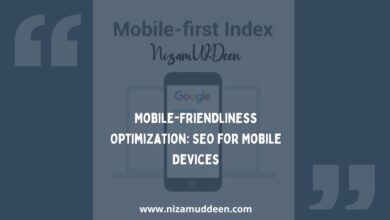On internet, making sure your website reaches people around the globe is like finding the right path in a maze. It’s not just about translating words; it’s about making your website speak the language and understand the culture of people from different countries.
That’s where the magic of international SEO comes in.
Think of it as a guide for your website, helping it speak the right language and show the most relevant things to people based on where they are in the world.
In this exploration, we’re going to unlock the secrets behind two important things:
the way we guide the website (using something called hreflang) and thinking about what people in different countries like to see.
Now, you might wonder what hreflang is. Well, it’s like a little code that tells the website where people are and what language they prefer.
This way, when someone from France visits, they see everything in French, and someone from Japan sees it all in Japanese. It’s like giving everyone their own customized experience!
But there’s more to it.
We’ll also talk about picking specific countries you want your website to be popular in. It’s not just about choosing any country; it’s about understanding the people there, adapting your content to their liking, and even using words that they often search for.
As we go on this journey, we’ll not only learn how to put these strategies into action but also how to make sure everything runs smoothly. It’s like having a roadmap and the right tools to make your website not just visible but also loved by people from all over the world.
In the end, this is about making your website a global superstar, and we’re here to guide you through the steps.
So, let’s dive in and make your online presence shine on the world stage!
Explanation of Hreflang and Its Purpose in SEO
In the complex landscape of international SEO, hreflang plays a pivotal role in ensuring that search engines deliver the right content to the right audience.
The hreflang attribute, embedded in HTML tags, provides a way to signal to search engines which language versions or regional variations of a page should be displayed to users based on their language preferences and geographic location.
Hreflang is an HTML tag attribute that helps search engines understand the language and regional targeting of a webpage.
The primary purpose of hreflang is to enhance the user experience by serving the most relevant content to users based on their language and location, consequently improving the website’s visibility and search engine rankings.
Different Variations of Hreflang Implementation
Hreflang implementation offers flexibility to cater to diverse linguistic and regional considerations.
There are various ways to utilize hreflang tags, including language targeting and region targeting, each serving distinct purposes in an international SEO strategy.
Language Targeting:
Language targeting involves specifying the language of the content on a webpage to ensure that search engines understand which language version to display to users.
Hreflang tags can be used to target specific languages, helping search engines direct users to the most appropriate language version of a page.
Region Targeting:
Region targeting is about signaling to search engines which geographic regions a page is intended for. This is crucial for businesses or websites with content tailored to specific regions.
Hreflang tags can be configured to target specific regions or countries, ensuring that users in those areas are directed to the relevant content.
Understanding these variations is essential for effectively implementing hreflang tags and optimizing a website for global audiences.
Benefits of Hreflang in SEO
In a globally connected online environment, catering to a multilingual audience is crucial for website success.
Hreflang tags contribute significantly to enhancing the user experience by ensuring that visitors are directed to content in their preferred language.
This not only improves user satisfaction but also reduces bounce rates, encouraging users to stay and engage with the content.
Hreflang allows websites to serve content that matches users’ language preferences, creating a personalized experience.
By presenting information in users’ preferred languages, websites can break down language barriers, making the content more accessible and understandable.
When users land on a page with content in their preferred language, they are more likely to stay, explore, and convert, leading to lower bounce rates.
Improved Search Engine Rankings for Specific Regions
Search engines aim to deliver the most relevant results to users based on their location.
Hreflang tags play a pivotal role in improving search engine rankings for specific regions by signaling to search engines the geographical relevance of content.
This targeted approach helps websites appear prominently in search results for users in specific locations.
Hreflang enables websites to specify the geographic regions or countries for which certain pages are relevant, improving visibility in search results for users in those areas.
Implementing hreflang tags correctly helps search engines understand that different language or region versions of a page are not duplicate content but rather tailored variations for distinct audiences.
Improved relevance in search results often leads to higher click-through rates, as users are more likely to click on results that match their language and location preferences.
Understanding these benefits underscores the importance of incorporating hreflang tags into your SEO strategy for a more user-centric and globally optimized website.
Implementing Hreflang Tags
Imagine your website as a friendly guide that speaks different languages, making sure everyone gets the information they need.
Well, implementing hreflang tags is like giving your website a superpower to do just that!
Guidelines for Adding Hreflang Tags to HTML
While understanding the benefits of hreflang is crucial, successful implementation relies on correctly adding hreflang tags to the HTML of your webpages.
This section outlines clear guidelines to ensure proper integration, providing a step-by-step approach for webmasters and SEO practitioners.
Correct Syntax:
Ensure the hreflang tags are written in the correct syntax within the HTML <head> section, specifying language or region variations.
Use of ISO Language Codes:
Utilize ISO language codes (e.g., “en” for English, “es” for Spanish) to precisely define language variations. For region targeting, combine language and country codes (e.g., “en-us” for English in the United States).
Link to Alternate Versions:
Associate each page with its alternate language or regional versions using hreflang attributes in the <link> tag.
Include Self-Referencing Tags:
Each page should include a self-referencing hreflang tag to indicate the language or region of the current page.
Common Challenges and Best Practices in Implementation
Implementing hreflang tags is not without its challenges.
This section addresses common issues encountered during implementation and provides best practices to overcome them.
By understanding potential pitfalls and adopting recommended practices, you can ensure a seamless integration of hreflang tags into your website.
Mismatched Codes:
Inconsistent or incorrect language and country codes can lead to misinterpretation by search engines.
Dynamic Content:
Websites with dynamic content may face challenges in dynamically generating and updating hreflang tags for various language or region versions.
Incomplete Tag Sets:
Hreflang tags should form a complete set, linking all language or region versions. Missing or incomplete tags can lead to confusion.
Best Practices:
Conduct regular audits to ensure hreflang tags are correctly implemented and updated as the website evolves.
Testing and Validation:
Use tools and validation methods to test and validate the implementation of hreflang tags.
Monitoring Performance:
Monitor the performance of pages in different languages or regions using analytics tools to identify and address any issues promptly.
By following these guidelines and being aware of potential challenges, you can optimize your hreflang implementation for maximum effectiveness in reaching and engaging your target audience across diverse languages and regions.
Target Country Considerations
Picture your website as a world traveler, exploring different countries and making friends everywhere.
To make this journey a success, you need to carefully pick and adapt to the places you want to be popular.
Identifying Target Countries for SEO Campaigns
Before embarking on an international SEO campaign, it’s crucial to strategically identify target countries.
This involves assessing market potential, business goals, and user demographics to prioritize specific regions.
This section outlines the steps and considerations for effectively identifying target countries to tailor your SEO efforts.
Considerations:
Conduct comprehensive market research to identify regions with high demand for your products or services.
Analyze competitors’ presence and performance in different countries to identify opportunities and potential challenges.
Align target countries with your business objectives, considering factors such as expansion goals, market saturation, and revenue potential.
Adapting Content for Specific Regions
Once target countries are identified, the next crucial step is adapting your content to meet the preferences and expectations of each region.
This section explores the nuances of content adaptation, ensuring that your website resonates effectively with diverse audiences across different countries.
Considerations:
Tailor content to align with the cultural nuances of each target country, respecting local customs, traditions, and sensitivities.
Translate content into the languages spoken in the target countries, ensuring accuracy and cultural appropriateness.
Display pricing in the local currency, and consider regional pricing strategies to enhance user trust and conversion rates.
Localized Keyword Research and Optimization
Localizing your SEO strategy involves more than just translating content; it requires a nuanced approach to keyword research and optimization.
This section delves into the intricacies of conducting localized keyword research to enhance your website’s visibility and relevance in each target country.
Considerations:
Identify and incorporate language-specific keywords that users in each target country are likely to use in search queries.
Utilize keywords that include geographic indicators to capture local search intent and improve regional search engine rankings.
Analyze competitors in each target country to identify high-performing keywords and incorporate them into your strategy.
By carefully considering these factors when identifying target countries, adapting content, and conducting localized keyword research, you can create a tailored and effective international SEO campaign that resonates with users in diverse regions, ultimately driving organic traffic and enhancing your global online presence.
Overview of Tools for Managing Hreflang Attributes
Implementing and managing hreflang tags efficiently requires the right tools.
In this section, we explore various tools designed to simplify the process of handling hreflang attributes.
These tools can assist webmasters and SEO professionals in ensuring accurate implementation, monitoring, and troubleshooting of hreflang tags.
Tools Overview:
Ever wish your website had a trusty sidekick to help it shine online? Well, that’s where tools come in!
HREFLang Tags Generator Tools:
These tools help generate hreflang tags based on specified language and region preferences, reducing the chance of syntax errors.
SEO Auditing Tools:
Comprehensive SEO auditing tools often include features for analyzing hreflang implementations, ensuring correct syntax, and identifying potential issues.
Webmaster Tools:
Platforms like Google Search Console offer specific reports and tools for managing hreflang tags, providing insights into how search engines interpret and index international content.
Third-Party Plugins:
Content management systems (CMS) like WordPress often have plugins or extensions designed to simplify hreflang implementation for websites built on those platforms.



